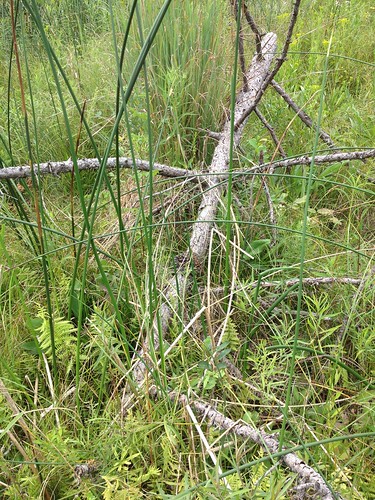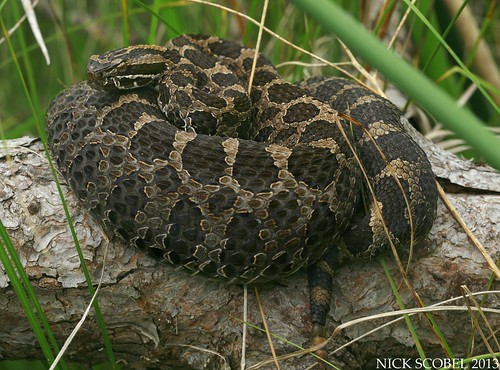Eastern Massasauga Rattlesnake - Sistrurus catenatus catenatus
This big girl never moved a muscle and allowed me to take a few shots from a relatively close distance. You can see how heavy bodied she is, hopefully she'll be popping out some little tykes in the next few weeks. We moved out of the area and walked another small meadow but didn't see much of anything. We decided to walk back to the area where the vole was in hopes of seeing the rodent's killer in the flesh. As we came upon the area, I think we all were elated to see this sight.
Eastern Massasauga Rattlesnake - Sistrurus catenatus catenatus
Certainly an awesome thing to see in the field, particularly with this species. This was a young massasauga which was probably about twelve inches in length and as you can see, the vole was considerably large in comparison to the snakes head and body. Snakes have the ability to dislocate their jaws in order to swallow prey items several times the size of their own head. Such a large meal will probably tithe a snake of this size over for the rest of the year. Because they are ectothermic, snakes require less energy physiologically and only need to feed a few times a year. Shortly after firing the above the photo the snake retreated into the tall grass, dragging the vole with it to finish the job. Looking back on the encounter, it gave us all a greater insight into the life of this secretive snake species. Like all rattlesnakes, massasaugas are sit and wait predators which likely utilize scent trails left by rodents like meadow voles. The snake had likely set up shop along a regular pathway used by the vole and waited for it to pass, delivering a fatal strike. The rodent probably stumbled a short distance to the edge of the trail, where it died. The snake used its tongue to follow the scent of the animal where it had fallen and began the process of swallowing its meal. This is the second time in my life that I've been lucky enough to observe a secretive species feeding on its prey in the field, the other being a mud snake eating a siren in southern Illinois. It was something that I'm sure I may never see again in my lifetime, I'm just glad I had my camera with me at the time.





No comments:
Post a Comment